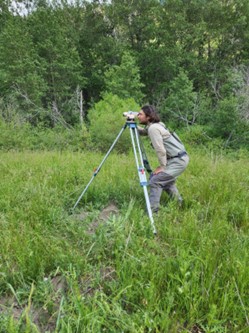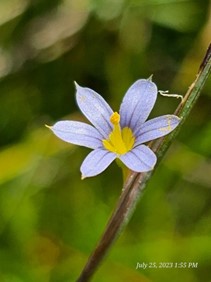Hello! My name is Bodie Spinner, I am a 4th year in Ecosystem Science and Sustainability with a minor in Geospatial Information Science. I have always known that I wanted to engage in research and learn about the world. As a kid, I spent most of my time exploring the forest, which led to a deep love of the natural world. I plan to pursue a career that allows me to learn about our world and contribute to conservation. The Seigele Conservation Science Internship has been an extraordinary step on my journey. I was able to experience a wide range of fieldwork with different organizations and ecological systems. It has helped to decide which issues and areas of research interest me. Comparing the differences between government and non-profit institutions, helped me determine which work environment is suited to my needs. I met so many new friends and colleagues across organizations. The best part was I got to contribute to protecting our natural resources all summer!


I worked with The Nature Conservancy monitoring aspen outside Breckenridge for 4 days. A fellow intern and I camped on Lake Dillion for the duration of the trip. The first part of the project was monitoring aspen that was planted from seed, a rare and novel study. One of the end goals of this study is to plant aspen around communities to reduce fire risk and increase evacuation time. If aspen can successfully be grown from seed, it would make this solution more feasible. However, fencing is needed due to high browse pressure from Elk and Moose. I really enjoyed this project because it raised a lot of questions about how wolves may contribute to Aspen forest health. The other half of the projected focus is on forest regeneration with slash-and-burn treatments. It was amazing to see how fast lodgepole pines regenerate after disturbance and in some areas, the aspen outcompeted the lodgepole. We also found Golden Corydalis a beautiful yellow flower spread across the treatment area. We learned that it grows well in disturbed areas. One of the best parts of the fieldwork is learning how to read the ecosystems. It helps you form a bond with your environment and gain valuable skills.

One of my mentors, Sarah Marshall, is very skilled in botany. Our field site at badger creek has many salt marsh plants. Sarah was able to tell that the soil was alkaline through what plants were present. However, this field site was impacted by soil compaction from cattle grazing. These effects were visible on the landscape once we learned what to look for. This is why I believe fieldwork is invaluable to anyone pursuing a career in Natural Resources. It allows us to learn skills that cannot be learned in the classroom. You also get the opportunity to learn and see the effects of restoration firsthand.


I strongly recommend this internship to anyone who wants to gain field experience and try a wide variety of work. It is a great way to explore new ecological systems and meet others in your field. One of the most valuable benefits of this internship is all the friends I have made at CNHP and other students at CSU!




